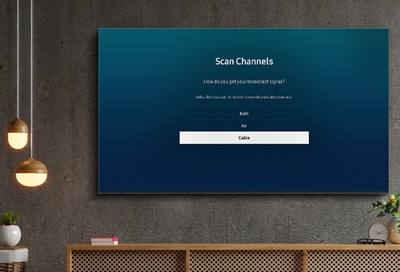9 Easy Facts About Apollo Group Tv Explained
9 Easy Facts About Apollo Group Tv Explained
Blog Article
Apollo Group Tv Things To Know Before You Buy
Table of ContentsGetting The Apollo Group Tv To Work5 Easy Facts About Apollo Group Tv ExplainedGet This Report on Apollo Group TvApollo Group Tv - Truths
In this circumstance, as opposed to having three-minute business spots during a 30-minute tv program, TV shows may change to one where a consumer will be needed to have a regular monthly subscription, so that they cen view targeted banner ads. This sort of advertising currently happens online, and the amount of information television companies accumulate permits them to do similar.Define the significant trends amongst the broadcasting and wire networks. Popular radio reveals such as police dramatization Dragnet and western cowboy collection Gunsmoke were adapted for tv, and brand-new TV programs were sponsored by single marketers, just as radio programs had actually been.
Today, the television industry is much more complex. Programs are sponsored by multiple marketers; programs is controlled by significant media corporations; and the 3 significant networks no longer control the airwaves but rather share their customers with numerous wire channels. Numerous aspects account for these fads within the industry, consisting of technological growths, government laws, and the creation of brand-new networks.

Apollo Group Tv - An Overview
Established in 1969, (PBS) created out of a record by the Carnegie Compensation on Educational Television, which examined the function of educational, noncommercial tv on society. Public tv was additionally intended to supply global access to television for customers in country locations or viewers who might not manage to pay for private television solutions.
The duration in between 1950 and 1970 is traditionally recognized as the. Apart from a little section of airtime controlled by public television, the three major networks (referred to as the Big 3) dominated the television market, jointly making up greater than 95 percent of prime-time viewing. In 1986, Rupert Murdoch, the head of multinational company Information Corp, released the Fox network, testing the dominance of the Big Three.
Targeting young and minority audiences with shows such as Buffy the Vampire Slayer, Moesha, Dawson's Creek, and The Wayans Bros., the new networks really hoped to attract terminals far from their old network associations. Instead than duplicating the success of Fox, UPN and WB battled to make an influence. Incapable to bring in several associate stations, both new networks got to fewer families than their larger rivals because they were unobtainable in some smaller cities.
This decision led the way for the growth of cord motion picture channels, contributing to the exponential growth of wire in the 1980s and 1990s. apollo group tv. More deregulation of wire in the 1984 Wire Communications Plan Act eliminated restrictions on cable prices, making it possible for operators to charge what they desired for wire solutions as long as there was efficient competition to the solution (a requirement that over 90 view percent of all cable television markets could fulfill)
The smart Trick of Apollo Group Tv That Nobody is Talking About

Having produced the initial "superstation," Turner increased his world by founding 24-hour news network CNN in 1980. At the end of the year, 28 national programming services were offered, and the cord change had actually started. Over the following years, the sector undertook a period of rapid growth and appeal, and by 1994 visitors could pick from 94 basic and 20 premium cable services.
Figure 9 - https://apollo-group-tv-ad275d.webflow.io/.16 Raised competition from cord networks has triggered a consistent decrease in the networks' audience ratings. Throughout the 1950s, the price of producing a single television program raised as shows became longer and manufacturing prices rose. Sponsorship on network television moved from single sponsorship, in which a program was completely sustained and generated by one advertiser, to multiple sponsorship, in which advertisers purchased 1- or 2-minute areas on the program
Each feedback should be a minimum of one paragraph. Choose one of the Big Four networks and print out its regular programs routine. See the network's prime-time programs throughout a week, keeping in mind the target demographic for each show. Observe the advertising sponsors that support each show and compare how the product or services fit with the intended target market.
The Apollo Group Tv Ideas

Straight TV, typically described as traditional broadcast TV, incorporates wire and satellite television. It's called "linear" because material complies with a fixed shows schedule, unlike on-demand content which the individual audience makes a decision to enjoy based upon their very own choices and routine. When you ask, "What is straight Television?", consider it as the classic way of viewing TV that has been around for decades.
Report this page